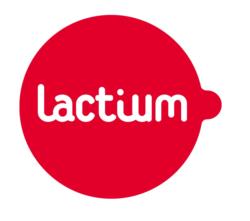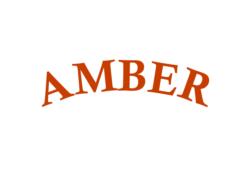- 01292 260 334
- My Account
- £0
Free shipping on all UK deliveries over £25 & under 2Kg
Recent Articles
- Do you really need to take a supplement if you eat well..?
- Back the gym - may be its time to take some MSM
- Can magnesium help migraine?
- Are you getting your daily D?
- Vitamin D deficiency increases risk of adverse effects of COVID infection
- Recovery from COVID - it's a bit of a lottery!
- There is more to vitamin C than you think
- Keeping one step ahead when the stress is rising
- Guarding against and battling the neurodegenerative nature of Alzheimer’s Disease
- How to boost Energy Naturally
When a Challenge becomes Stress…
24/11/2015
We all need a level of challenge in life in order to thrive otherwise life becomes dull. But, when those challenges no longer become a positive experience but instead outstrip your coping abilities, then ill-health could be the result.
We all react individually to different stresses, and what appears to be a positive challenge for one person could be a ‘nightmare’ for another. The secret is balance; too much challenge or challenges that we perceive are ‘beyond us’ may lead to us feeling unable to cope. Too few challenges and we become bored, demotivated and this too can lead to stress. Two systems in our body control this balance; the sympathetic system gives us our ‘get up and go’ and releases stress hormones like adrenaline to give us the energy to deal with challenges, and our parasympathetic system is responsible for keeping us relaxed. When these work together in harmony, we have the ideal situation, however this can be a rare occasion.
We tend to suffer the ill effects of stress as a result of too many life challenges or ongoing situations which maybe outwith our control. Stress takes its toll physically and mentally, but before we can deal with the symptoms of stress, we have to realise and accept that it could be due to stress and it is up to us to do something about it.
Finding the cause
While the cause of stress may be obvious, all too often we blame others for the everyday issues in order to avoid facing and addressing the real cause. The daily grind of life can often overshadow and cover up the real root of the problem. Take some quiet time and write down all the things in your life that make you happy. Then make another list of all the things that upset you. The list should include daily anxieties as well as the more long-term problems. Once the list is complete separate your ‘problems’ into minor and major categories. In order to help, you can number your problems on a scale of 1-10; one being not much of a worry and ten being major problems.
Addressing the Issue
Then, it is time to deal with your list. First look at the small worries. Can you confront them, or plan and anticipate how to deal with them, perhaps you may even be able to remove them. Once the small issues are separated from the larger problems they are often easily dealt with and by doing this more serious problems often start to ‘break down into more minor or manageable challenges.
You can also try using some of the following strategies to help ease the day to day challenges, leaving more time time and energy to manage your larger worries.
Positive Self-Talk
Self-talk is what you are thinking and telling yourself. Eradicate the words, “I can’t” immediately. One of the most effective methods of turning negative self-talk into positive messages is to mentally say ‘stop’ when you have a negative thought. This will act as a command and also a distractor while you come up with a positive response.
Dealing with Incoming stress
Fortunately our response to stress lies within our control. The key is awareness of our responses to stressful situations and be prepared. There are only a few options to respond to stress and controlling your response can alleviate some of the physical and mental anguish. Anticipation of what is going to happen and making a plan of action allows you to control your response ahead. Confronting stress head-on can useful especially when dealing with another person or perhaps you can simply remove or change the way you deal with or perceive the stressful situations.
Physical Effects
Physically, too much stress over a period of time can take its toll. The breathing pattern tends to be affected first. It changes to become shallower and quicker coming mostly from the upper chest instead of the slow steady diaphragmatic breathing seen in a relaxed person. This alters the balance between the sympathetic and parasympathetic systems and can lead to hyperventilation and panic attacks. The simplest method to correct shallow breathing is over-exaggeration of abdominal breathing. Lie flat on your back and place one hand on your upper chest and the other hand on your abdomen. Slowly breath in through your nose and imagine the breath by-passing the top hand and reaching the bottom hand on your abdomen. Feel the abdomen slowly rising and hold the breath for a few seconds and then slowly breath out through your mouth. It may take some time to perfect this simple technique and should be practised at first for short periods of time to avoid dizziness. This is also a great technique if you have difficulties falling asleep or waking in the night. It is a real help before common stressful situations, you can simply adapt the technique to a sitting position. After some practice you will naturally be able to do the technique without placing the hands and just quietly breathe. If panic attacks are an issue, the amino acid L-Theanine can be useful as it will enhance the calming alpha waves without leaving you feeling drowsy. I recommend Elthea as you can open the capsule and place directly in the tongue for a quick action.
Diet
Unfortunately, when stressed our nutritional habits decline. During stress our immune systems are under immense pressure and require good nutrition to avoid becoming ill. You can give your immune system a bit of an additional boost with…
Take note of how you feel when you have eaten – that way you will identify the foods that make you feel well. In general, drink plenty of water, eat foods that are high in vitamin C and the B vitamins. That means plenty of fresh fruit and veg.
You may start to crave caffeine and high sugary foods and drinks and you may even feel it’s warranted ‘to get you through the day’, but the reality is that it is going to do even more harm. Take a good multivitamin which is high in the B vitamins, vitamin C and magnesium.
If you have digestive upsets try a good probiotic such as Acidophilus Pearls IC.
A helping hand of 2 capsules of Zen-Time should help take the ‘edge off’ the stress with its relaxing properties and the ability to support mental function. You can also take one 40 minutes before you go to bed if you are having sleeping difficulties.
This is the time to take heed to your symptoms though, at the very least. Left untreated these can manifest into more symptoms and have a knock-on effect on other body systems.
Tweet

Maria Webb
Psychology | Stress | Health
Archive
What is Lactium®
24/11/2015
Lactium® is a patented extract derived from the milk protein known as casein. The unique string of peptides (proteins) found in Lactium have been shown to interact with specific areas of the brain and nervous system to enhance a balanced and calm outlook to life.
The discovery of Lactium®
The story starts back in the late 1990’s when researchers investigating the connections between calmness and milk drinking in newborns raised the possibility that something in milk was affecting the brain. The investigators knew that a newborns digestive system was quite different to that of an adults and favours protein digestion (so called tryptic digestion). They also knew that the key protein in milk was a large and complex one known as casein. The next step was to explore the possibility that the newborns digestive system was splitting the casein molecule in a special way so that it produced a string of proteins (peptides) that actually induces a state of calmness and relaxation once absorbed and integrated within the nervous system.
By 2001 researchers finally identified what has become known as Lactium®, a specific string of 10 peptides isolated from casein that had the anti-anxiety (benzodiazepine-like) properties predicted by the earlier newborn studies. Further studies helped to confirm the mechanisms that lay behind the ability of Lactium® to induce a general feeling of wellbeing and calmness.
How Lactium® works
Lactium® has been shown to have a benzodiazepine-like action within the brain. This has been shown to relate to the ability of the specific arrangement of the 10 peptides that form Lactium® and their interaction with a key anxiety associated brain receptor known as the GABAA-receptor. It is this receptor that the benzodiazepine drug class (eg. Valium) binds with in order to stimulate a calm state of mind. Unfortunately, we are all too aware of the complications associated with benzodiazepine medications so when it was shown that Lactium® had a high affinity for this receptor but only to one part of it, the part that eases anxiety and not the part that causes sedation, its real power, safety and broad application as a food supplement became apparent. From a biological perspective, the focus of Lactium® action concentrates within the region of the brain known as the hippocampus; an anatomical area with a high concentration of GABAA-receptors. It’s no coincidence that stress, memory and many other key psychological processes are regulated by this brain structure which has even been implicated to be dysfunctional in a wide range of problems ranging from chronic fatigue syndrome, fibromyalgia through to Alzheimer’s disease. What appears to be evident is re-balancing the activity of the hippocampus offers benefits to chronic stress and anxiety sufferers that may extend to improved memory and sleep patterns.
Tweet

Lactium® the lactose free aid to a calm life and relaxation
A spice to cool the inflammatory fires
24/11/2015
There has been quite a lot of press interest in the adverse effects of certain anti-inflammatory drugs and their potential to trigger a host of unwanted side effects including heart attacks. It’s no secret that most anti-inflammatory medications can play havoc with your stomach and gut but the news that taking these drugs could cause heart complications was quite a shock to those who have come to rely on these drugs to get them through the day. Interestingly, research over the years into the spice turmeric has revealed some encouraging results when used to treat pain and inflammation. Turmeric is composed of a complex mixture of organic compounds the principle one being curcumin. Although easily confused with the spice cumin, curcumin is completely unrelated and a unique compound to the spice turmeric. It belongs to a group of compounds called curcuminoids that are responsible for the typical yellow colour of turmeric. Anyone who has seen natural turumic root in the supermarket may notice a similarity to another culinary spice, ginger root. However, this is no coincidence because turmeric and ginger both belong to the same botanical family; Zingiberaceae. Both of these spices accumulate pharmacologically important compounds within the root tissue. In the case of turmeric the compounds are known as curcuminoids where as in ginger the compounds are called gingerols. The key fact that interests us is the ability of these compound to effectively reduce inflammation and pain while sparing other tissues the hazardous side effects commonly associated with anti-inflammatory medications. This may sound a bit to good to be true but to understand how turmeric, or more specifically the curcumoid known as curcumin, achieves this we will have to discuss the inflammatory process and a bit of biochemistry!
Inflammation – the basics.
When ever we injure ourselves the body has to mend the damage. To do this, chemicals need to be released that enhance blood supply, neutralise any invading bad bacteria and stimulate the local immune reaction. Over this early (acute) phase inflammation is accompanied by pain, swelling and some heat. In the majority of cases this process is self-limiting and once the injury has been mended all the levels settle to normal along with all the related symptoms. However, this is not always the case especially if there is an ongoing irritant present such as arthritis, joint damage or autoimmune disease. In these cases the inflammation becomes chronic and the sufferer experiences daily pain and disability. Anti-inflammatory drugs can offer great relief but often at a price and their safe long term use has become questionable.
Inflammation – the chemistry
The cascade of events that eventually causes inflammation kicks off within cell membranes. A specific fatty acid, known as arachidonic acid (AA), is released from it’s bound state within the cell membrane by an enzyme (phospholipase-A2). Two key players in the inflammation story, COX and LOX, then act upon the now freed AA. The COX enzyme comes in two forms, COX1 and COX 2. When AA interacts with COX1 it produces a mixture of compounds (prostaglandins; PG’s) that protect the stomach and maintain the ability of the blood to clot. When AA interacts with COX2 in produces PG’s that signal pain and enhance inflammation. The LOX enzyme converts AA into another powerful group of inflammatory compounds known as leukortrines. Drugs that block the COX and LOX enzymes are known as anti-inflammatory drugs for this reason; they block the inflammatory cascade. However, by blocking the COX1 enzyme these drugs also block the stomach and gut protective PG’s and cause thinning and blood vessel leaks as they also block the PG’s that maintain blood clotting. As a result, specific drugs were developed that selectively block the COX2 enzyme but leave the COX1 alone. In theory, this sounded great but in reality the drugs did leave the COX1 enzyme alone in the majority of tissues except the COX1 found within the cells that line the blood vessels. These cells are called endothelial cells and the COX1 enzyme within these cells produces a special compound known as prostacyclin, which in turn maintains the smooth flowing of the blood within the blood vessels. By blocking the action of endothelial COX1 and the production of prostacyclin blood becomes stickier and prone to clotting, which explained the increased heart attack risk associated with drugs that have COX2 inhibitor action.
Inflammation – the natural answer
Research into the anti-inflammatory actions of curcumin has revealed that curcumin is a safe and effective inhibitor of COX2 and of the LOX enzyme that is responsible for the generation of the powerful inflammatory actions of leukortrines. What’s more, curcumin has also been shown to block the initial release of AA from the cell membrane. By doing this curcumin may have an effective preventative action as well as a powerful anti-inflammatory effect when used on a regular basis. To date, there have been no indication or suggestion that curcumin inhibits the endothelial COX1.
One factor that goes against curcumin is it’s poor absorption from the digestive tract. To get around this problem, two manufacturers have produced a highly bio-available extract; EuroPharma’s (USA) CuraMed product, based on the BCM-95® curcumin ingredient and Natural Factor’s (Canada) Theracurmin that uses a microscopic particle (100 times smaller than regular curcumin powder) size to enhance the curcumin absorption from the gut. Studies using Theracurmin have shown that the microscopic curcumin particles are absorbed up to and reach concentrations 300 times higher than regular powders.
How to take curcumin supplements
Both products are simple and easy to use; take 1-2 capsules daily around a meal time. Because of the lack of available information, those who are pregnant or breast feeding or taking warfarin should only use curcumin based products after taking medical advise.
Tweet

Marcus Webb
Diet | Lifestyle | Health
Amber Ointment, A Treasure from the Baltic Sea
24/11/2015
Amber Ointment, available for the first time in the UK, is a natural healthcare product from Poland. Amber Ointment contains Baltic Amber Extract which is derived from Baltic Amber; a precious stone found uniquely in the Baltic Sea, which meets Poland at its Northern Coast. Baltic Amber has for centuries been used in Polish medicinal tradition. Its healing properties have been used in ointments, balms, tinctures, even in jewellery claiming to relieve pain. Organic compounds found in Baltic Amber have warming abilities, helping to loosen up muscles around the joints as well as improving blood circulation.
Scientific research has shown that organic compounds found in Baltic Amber have a wide range of effects.
Terpene group substances appear in Baltic Amber in large quantities. With their similar physical and chemical properties, compounds such as Carene, D-Borneol and P-Cymene have warming abilities which help to loosen up muscles around the joints as well as improving blood circulation. They also have the ability to stimulate sensory nerve endings therefore extending blood vessels and increasing skin blood flow, which can be beneficial in reducing pain.
Baltic Amber contains up to 8% succinic acid, a bio-stimulant which activates cell metabolism and shows anti-inflammatory and detoxifying properties. It can also be found in various food ingredients including gooseberries, apples, grapes and turnips. However, Baltic Amber contains a thousand times more succinic acid than even rhubarb stalks, the food richest in the acid!
Baltic Amber also contains minerals such as silica, magnesium, iron, calcium, potassium as well as organic compounds combined with iodine, volatile substances and resin acids which all have a positive influence on our health. Acid and oil also obtained from amber destroy free radicals as well as being a natural disinfectant. Raw, unpolished amber has antibacterial properties, facilitates the wound healing process and is said to reduce blood pressure.
Baltic Amber: From Tradition to Modernity
Paleobotainsts have found that Baltic Amber resin comes from a specific kind of coniferous tree known as Pinus Succinifera. The best proof we have of this are chips of bark and tissues (known as organic inclusions) contained within amber pieces and which trace back 40 million years. Since ancient times, from Europe to China, amber’s attractive appearance has allowed it to serve as both decorative material and medicine.
Amber necklaces helped in treating upper airway disorders such as bronchitis and tonsillitis as well as asthma and toothaches. It was administered to children for chewing as a pain relief during teething! It was also known to treat sleep disorders, menstrual ailments and even bleeding in childbirth. Amber Tincture was made using amber pieces collected on the shore which were then left to stand in pure alcohol. It was renowned for general strengthening of the body and in cases of flu and colds, the tincture was rubbed in twice a day on the chest, feet and knees whilst for headaches a few drops would be applied on the forehead. When brought down with a cold, a little of the tincture rubbed under the nostrils would be sure to cure you of a runny nose!
Amber was most importantly known to be a great healer of rheumatic disorders, where amber bracelets were proven to induce reduction or complete remission of arthritic bumps. As Giacomo Fantuzzi discovered from his 1652 journey to Gdańsk, a coastal city in Northern Poland resting on the Baltic Sea, “amber oil is effective for rheumatic diseases, easing muscle pains and improving blood circulation.” In the coastal regions of Poland, you may still find that people adorn their homes with good luck charms made from amber.
In the Nineteenth Century, chemists continued the use of amber in medicine by preparing various amber balms and tinctures as well as beginning a trend for the use of amber in cosmetics. Today, amber is highly respected among natural medicine supporters who strongly believe that amber helps us to regain the natural balance of our electromagnetic fields by generating negative charges. Try it yourself by rubbing a piece of amber with wool to see the electrostatic effects!
Did you know…?
- Baltic Amber comes in a richness of varieties with differing degrees of transparency and diverse colours from yellow through to tints of white, blue, green, beige and brown.
- Ancient Romans believed serving amber with honey improved the eyesight whilst the ancient Chinese mixed amber with opium to make an effective sedative and analgesic.
- In the Middle Ages, monks drank amber in the form of a tinctured beer to cure stomach pains.
- Copernicus, the Polish medieval astronomer, who discovered the Earth moves around the Sun, prescribed Baltic Amber for heart disorders.
- Avicenna, a famous Arab physician, believed amber worn around the neck could reduce swellings of the thyroid gland.
- During the Great Plague, affected areas were incensed with amber smoke and sources from the Seventeenth Century note that amazingly in Baltic cities there were no deaths among amber jewelers!
Tweet

The Amber Ointment - Now available in the UK from supersupps.com
- visa
- visa verified
- american express
- mastercard secure
- mastercard
- maestro
- delta
- sagepay